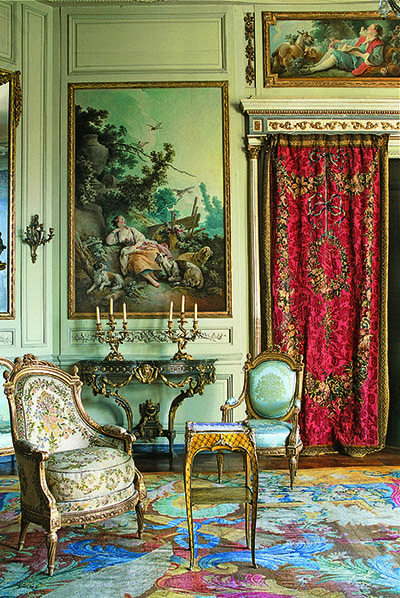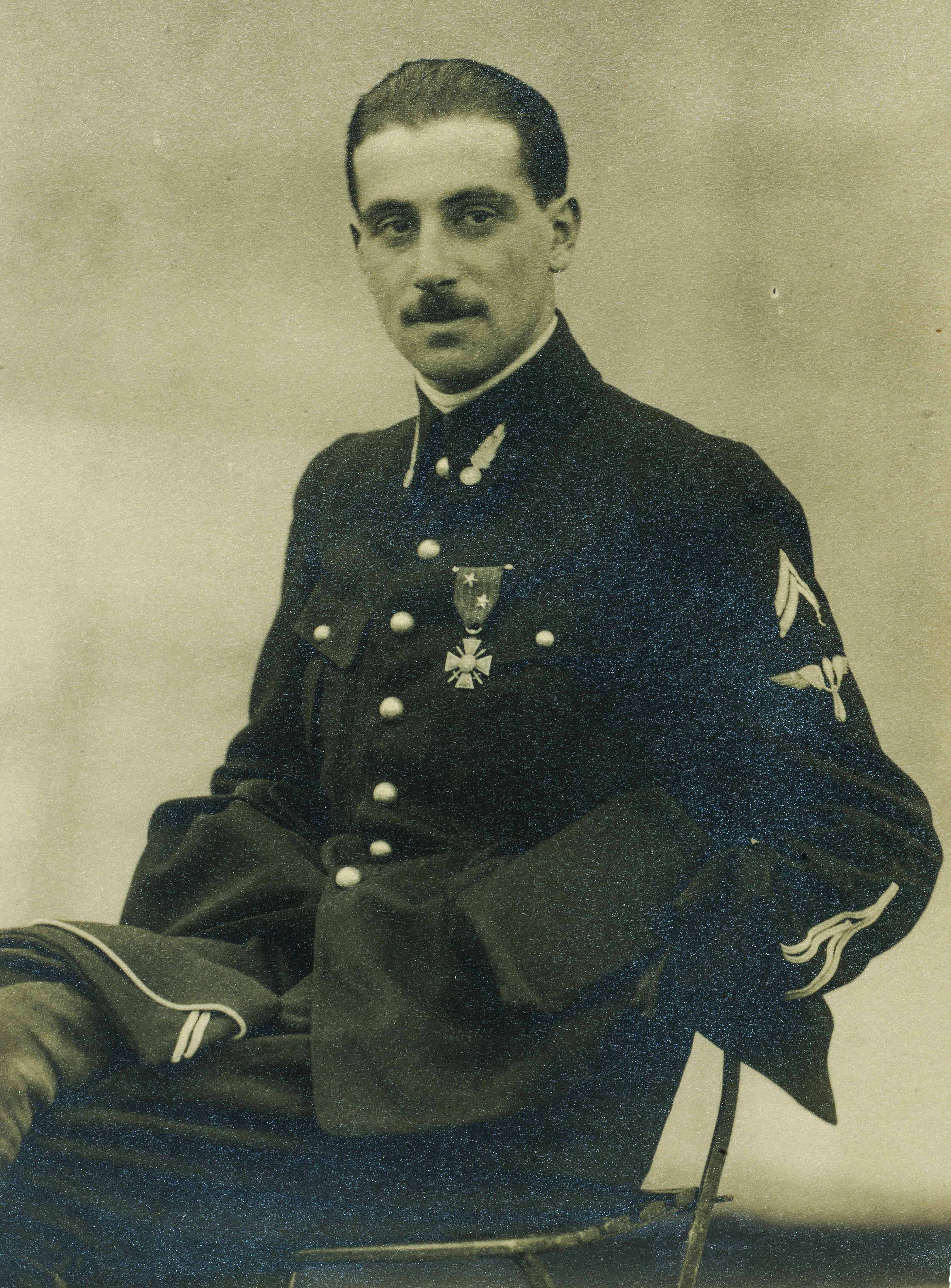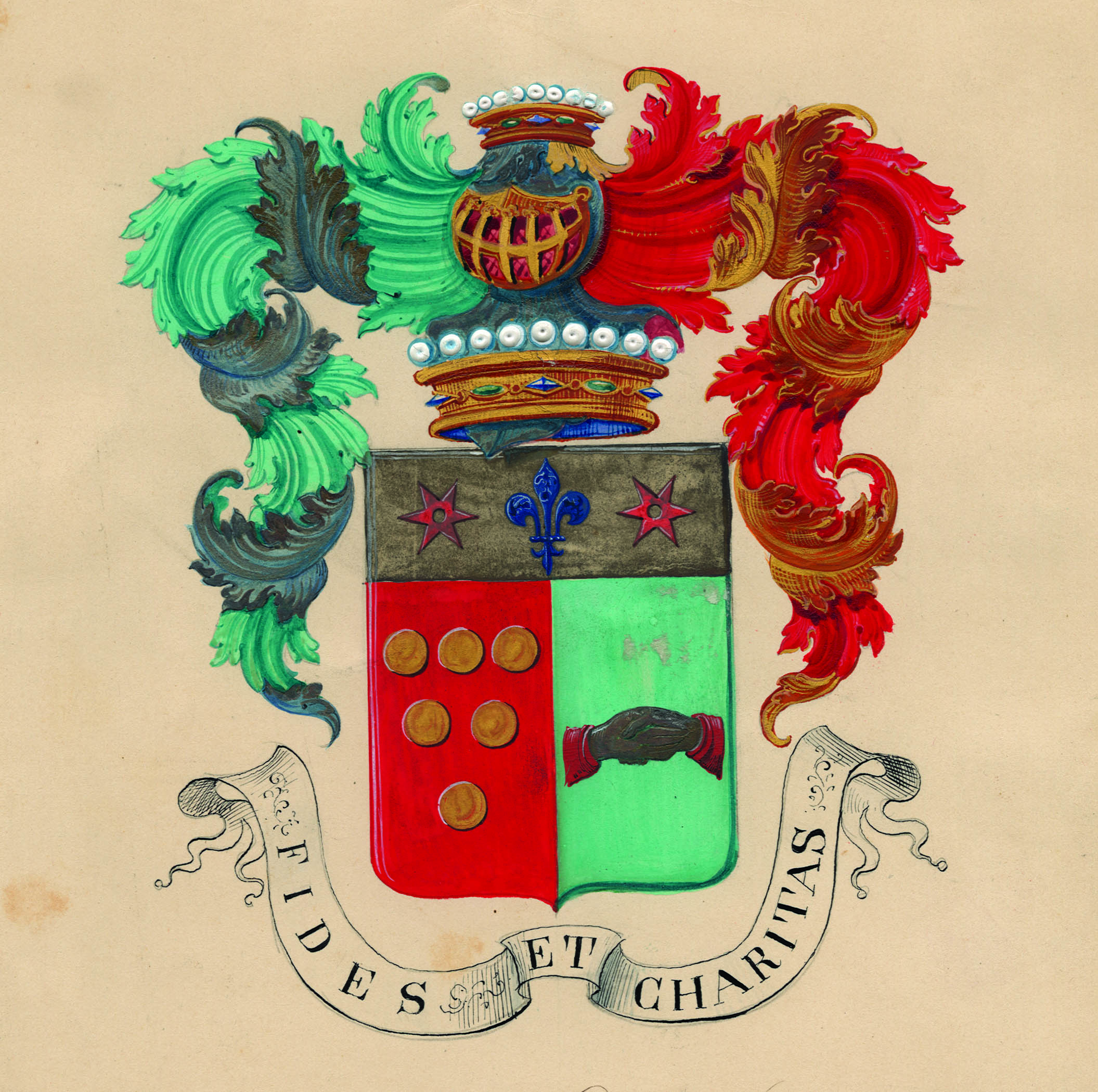Wider World
Life + Style
Arts
Exhibit
The History and Heartbreak of Paris’s Camondo Museum

War and genocide are the last things that come to mind as you cross the hushed gravel courtyard of the Musée Nissim de Camondo, the Paris museum that was once the townhouse of Sephardic nobleman Count Moïse de Camondo. Scion of a banking family known in the 19th century as the Rothschilds of the East, Camondo had the two requisites of the great collector—exquisite taste and vast wealth—and he deployed both in turning his mansion along Parc Monceau into a shrine to French 18th-century art and design.
But riches and social position did not spare the Camondo family the tragedies of 20th-century Europe. Though the count’s house museum flawlessly reproduces the luster and elegance of the period before the French Revolution, it was in fact built in the shadow of World War I and opened as a museum on the eve of World War II. The illusion of the ancien régime was complete, but it was an illusion all the same. The Shoah erased the family, and all that survives is their beautiful house and the memory of their noble name.
In contrast to palatial repositories like the Louvre and Versailles, the Camondo museum is intimate, contemplative and manageable in an afternoon. A superb audio guide available in English invites you to imagine Moïse de Camondo standing at the top of the gilt-railed staircase as he waits to usher you into one of the grand public rooms on the main floor. Perhaps there would be tea in the large study, with its tall gold-framed mantel mirror flanked by a pair of gauzy Aubusson tapestries depicting rustic scenes. (Although a visitor can find a short, continuously running video in French that describes how family members were deported to Auschwitz; a Camondo family tree displayed in an upstair’s bedroom; and a glossy book on the museum that includes the family history in the gift shop, the museum does not give a full accounting of the family’s fate.)
The large drawing room, which faces the garden at the back of the house, was designed around the white-and-gold oak paneling that was somehow transferred intact from a noble residence. Here hangs the collection’s most striking oil painting—a portrait of a pink-cheeked noblewoman dressed to the nines in striped satin and captured at the height of her beauty by Marie Antoinette’s court painter, Élisabeth Louise Vigée Le Brun. In the many-windowed dining room, also overlooking the garden, a bust of a naked African woman glistens on a sideboard across from the linen-draped oval table set for eight.
“He was not a maniac when it came to collecting—but close,” the museum’s chief curator, Sylvie Le-grand-Rossi, said of Camondo when we sat down to chat in her surprisingly drab office on the top floor in what was once the servants’ quarters. “What’s unique about his collection is that the level of taste is so harmonious and uniformly high.”
The spirit of this great collector is most palpable in a narrow, closet-like compartment off the dining room where the incomparable collection of Buffon Sèvres dinner service is displayed in tall glass cabinets. Late in life, Camondo liked to lunch here by himself at a small round table set beside the window. As the mood seized him, he could look out at the boxwood embroidery of his terraces that ran along the dappled park that Claude Monet so memorably painted, or turn his gaze inside to row after row of porcelain plates, each precious dish and bowl painted with a different species of bird.

Though the Camondo family’s early history is unknown, they probably lived in Spain until the expulsion of 1492, then made their way east to Istanbul. The bank they founded in 1802 quickly grew to one of the largest in the Ottoman Empire, and the Camondos took their place as pillars of Istanbul’s Jewish community. But as their wealth increased, the allure of the West, with its larger prospects and more varied pleasures, proved irresistible. In 1869, when Moïse was 9, the family relocated to Paris, where he grew up in the elite Jewish circles of fin de siècle Paris.
In Paris, Camondo’s father, Nissim, and his uncle Abraham-Béhor built adjoining mansions beside Parc Monceau, which was becoming the preferred quarter for chic, deep-pocketed Jews. Though targeted for their “Oriental” opulence during the vicious outbreak of anti-Semitism that followed the Dreyfus affair (1894 to 1906), the Camondo family assimilated quickly to French aristocratic culture.
Moïse de Camondo’s assimilation took the form of a passion for French creations, particularly during the reigns of Louis XV and XVI. When he inherited the family’s mansion after his mother’s death in 1910, he decided
to replace it with an airy, delicate townhouse that would not only display but also reflect the style of his ever-expanding collections. Designed by fashionable French architect René Sergent in the spirit of Marie Antoinette’s Petit Trianon at Versailles, the house was ready in 1914.
Camondo’s term of happiness was brief. His marriage to French socialite Iréne Cahen d’Anvers ended in divorce shortly after their two children—son and heir Nissim (named after his grandfather) and daughter Béatrice—were born. In 1917, Nissim was killed in the Great War at the age of 25 while flying a mission for the fledgling French Air Force. Devastated, Camondo bequeathed the residence and its collections to the French state as a memorial to his son, with the stipulation that nothing be altered. In 1936, the year after Moïse de Camondo died, the Musée Nissim de Camondo was opened to the public as a branch of the Musée des Art Décoratifs.
Amid so many ingenious lovely things on display here, I would never have noticed a tiny oval sewing table set with diamond-patterned marquetry had Legrand-Rossi not informed me that it once belonged to Marie Antoinette and is thus one of the museum’s prized possessions.
More intriguing to my untrained eye were the bathrooms and kitchens. Though the count insisted on period authenticity in his public rooms, he had his architect equip kitchen
and bath with the latest modern conveniences. The black-and-white tiled kitchen puts Downton Abbey’s downstairs to shame. Even the servants dined on linen, and the ovens and rotisseries look big enough to smelt steel girders. As for the bathrooms, each is adorned with a separate tub, bidet and footbath, to say nothing of sinks and toilets, all tiled in gleaming white.
Once you’re familiar with the name Camondo, you’ll notice it popping up in Parisian memoirs and museums. Edmund de Waal in his memoir The Hare with Amber Eyes notes the social connection between his Ephrussi relatives and the Camondos. The townhouse belonging to de Waal’s family, now an office building at 81 rue du Monceau, is up the hill from the Camondo museum. At the turn of the last century, this was “a street of Jews,” writes de Waal, “a street full of people on display in their lavish golden houses.”
You’ll also find the name Camondo beside a slew of paintings in one of Paris’s most beloved exhibition spaces—the top floor gallery of the Musée d’Orsay. Isaac de Camondo, Moïse’s first cousin, had a matchless collection of Impressionist paintings that are on display there. His name is listed as donor on many of the masterpieces—Edouard Manet’s The Fife Player, The Ballet Class by Edgar Degas, Monet’s Rouen Cathedral series.

Moïse de Camondo’s family met a terrible end. Apparently, Camondo never considered passing the townhouse and collections to his daughter, Béatrice, who, like her mother, preferred hunting to art. Béatrice married Leon Reinach, a Jewish musician from a scholarly family (they later divorced), and bore two children, Fanny and Bertrand. Edouard Roditi, whose family was distantly related to the Camondos and moved in their social milieu, wrote in a reminiscence called Camondo’s Way that Béatrice “remained very foolishly” in Paris during the German occupation and rode in the Bois de Boulogne every day with her obligatory Star of David prominently fixed to her riding costume. “Because she had hunted some years earlier with Goering, she was quite sure that she and her family would never be molested.”
She was wrong. The Gestapo hauled the family to Drancy, the concentration camp outside of Paris, and tortured them, in Roditi’s words, “to extract money and information.”
On November 20, 1943, Leon Reinach and his children were sent to Auschwitz on convoy 62. Béatrice remained at Drancy until March 4, 1944, when she was transported to Auschwitz with convoy 69. They were all murdered at Auschwitz.
During the war, the Camondo collections were transferred with those of Versailles, the Louvre and other national museums to the Loire castles. They remained there during the entire war and returned to Paris when the Musée Nissim de Camondo reopened in 1946.
It is a cruel irony that the Camondos’s house and collections survived the war intact because they belonged to France, while the family, who, as French aristocrats believed themselves safe, vanished without a trace in the Shoah, thus ending their noble lineage.
David Laskin, a Seattle-based writer, is the author of The Family: A Journey Into the Heart of the 20th Century.










 Facebook
Facebook Instagram
Instagram Twitter
Twitter
Sabrina says
What happened to the camondo fortune? Did the Germans get all the money?